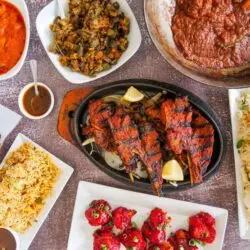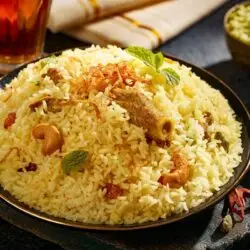London is a city rich in history, culture, and cuisine. South Asian spices stand out among its culinary gems. These spices convey tales of migration, innovation, and tradition from the busy streets of Covent Garden to the quaint nooks of obscure eateries. Discovering London through South Asian spices is a voyage of flavour, fragrance, and exploration.
The Rich Heritage of South Asian Spices
Spices define South Asian cuisine. Spices like cardamom, cumin, fennel, turmeric, and fenugreek turn ordinary ingredients into delectable meals. These spices are more than just flavour in London; they are part of the city’s past. They bring with them centuries of Sri Lankan, Bangladeshi, Pakistani, and Indian culture. Every restaurant maintains its genuine roots while adding its own special twist.
Covent Garden: A Spice Lover’s Hub
Covent Garden is full of vitality, energy, and energy. There is a buzz all around due to street performers, craft shops, and street food stalls. The smell of South Asian spices stands out among them. You can catch the whiff of coriander seeds roasting, turmeric boiling, and garam masala roasting while you walk around there. These smells lead customers to restaurants and cafes that offer genuine food.
Signature Dishes Highlighting South Asian Spices
Chefs in Covent Garden try out spices to design unforgettable taste. At Paro Indian, you can try:
• Brinjal Bhaji:
Turmeric, cumin, and mustard seed-cooked eggplant.
• Bindi Okra:
Sautéed tender okra with chili, coriander, and black mustard seeds.
• Bengali Fish Curry:
Simmered fish in poppy seeds, mustard oil, and green chilies.
You can enjoy robust street-style dishes like these at City Spice London:
• Duck Tikka:
Perfectly grilled after marinated in smoked paprika, cardamom, and black pepper.
• Sheekh Kebab:
Minced lamb seasoned with caraway seeds, cumin, and garlic.
• Saag Paneer Roll:
Paneer and spinach seasoned with a little clove, garam masala, and fenugreek.
• Aloo Chaat:
Crisp potatoes topped with coriander, tamarind, and chaat masala. These choices demonstrate how the colours, scents, and flavours of South Asian spices can liven up boring ingredients.
How Spices Transform the Dining Experience
Spices are about more than flavor. They add layers of complexity to dishes. Nigella seeds add mild pungency, tamarind acidity and fenugreek leaves a sweet, earthy scent. When they get this mix of spices right, they take you on a flavor roller coaster ride through the entire meal.
In London, their chefs also use spices in innovative ways. Smoked paprika gives a boost of depth to classic curries, green cardamom and star anise to seafood recipes. These experiments remain true to the spirit of Indian regional cooking while bringing forth new flavors.
Why South Asian Spices Matter in London
South Asian spices aren’t just ingredients—dish of culture. Each spice is a history of migration, family tradition, and story of who they are. London’s multicultural community has welcomed these flavors, and homegrown chefs innovate to this day.
Spices also provide unity. Enjoying a shared plate of Duck Tikka or onion Bhaji with family or friends makes the meal a social occasion. The fragrance, color, and flavor stimulate conversation and celebration.
Tips for Trying South Asian Spices in London
1. Follow the smell:
Allow the smell of spices to lead you to genuine restaurants and stalls.
2. Experiment with different dishes:
Order seafood, vegetarian, and grilled dishes to experience different spice levels.
3. Inquire about spice blends:
Some chefs utilize special house blends to enhance classic recipes.
4. Pair wisely:
Have spiced dishes with plain sides such as naan, steamed rice, or mildly flavored salads.






